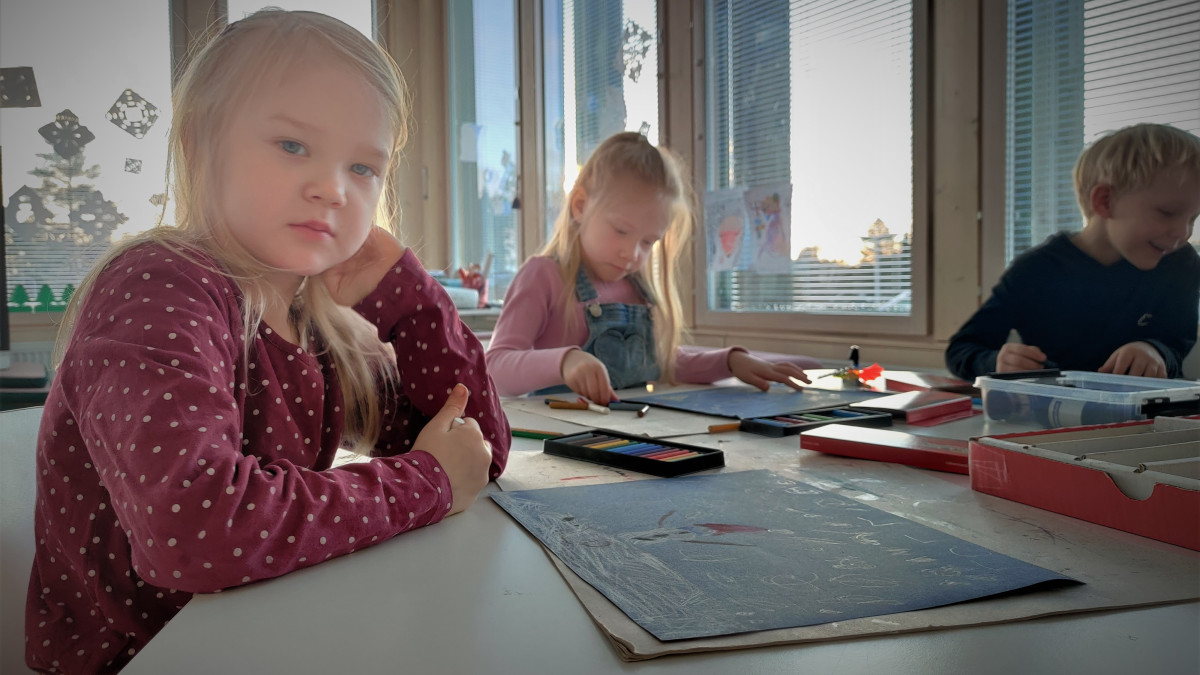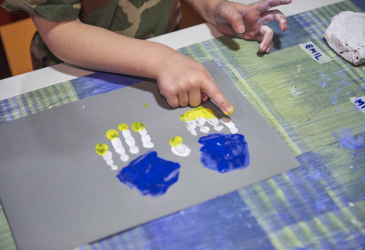
Preschool education for five-year-olds is about playing and learning everyday skills
In the fall of 2021, a two-year pre-school experiment started at Imatra. In the experiment, children start preschool a year earlier than usual: preschool is entered the year the child turns five.
The experiences of the 5-year-old eskars, or veskars, from their first fall at Imatra have been encouraging.
— The Veskars have been eager to learn new things. During the fall, we have gotten to know each other and learned how to work together in a group, Deputy Director of Early Childhood Education in the Mansikkala region Mikko Kettunen says.
Learn while playing on vacation
Learning eskars for 5-year-olds is about observing, exploring and observing the environment.
The curriculum emphasizes play and learning through play. Skills are learned as part of everyday activities.
—We practice math skills, for example, so that when we go on a trip, we count the number of mailboxes in the yard. When we come to the next row of mailboxes, we count them too, and then we think together about which row had more boxes, says Kettunen.
Learning everyday skills is important: in the grocery store, you practice dressing in clothes suitable for the weather, eating independently and taking care of your belongings. At the same time, social skills are also developed and we learn to function as part of a group.
—All in all, two years of preschool education gives children more time to learn the things they need in the school world, Kettunen sums up.
Early childhood education teachers also get extra time: when you spend two years with children in preschool, it is easier to notice possible special needs.
—If the child needs support, we have a year more time to work on things and make sure that the child can start the actual school on a good basis.
Information for families in February-March
The second year of the experiment will start next fall. At that time, children from Imatra who were born in 2017 will be able to start the pre-school trial.
Information about the child's possibility to participate in preschool is sent to families between February and March.
—After receiving the information, families can decide for themselves whether they will participate in the experiment. Registration is done electronically and families will receive more detailed instructions during the spring, head of early childhood education Minna Leinonen says.
Handyman groups are formed in nearby daycare centers. Children in Mansikkala's shift care also have the opportunity to participate in the experiment.
The more precise size of the groups and whether the 5-year-olds form their own group or whether they work as part of other kindergarten groups will become clear after the exact number of participants is known.
Participation in the trial is free of charge
Pre-school education is organized in kindergartens for four hours a day. Teaching is free of charge for families.
—The child has the opportunity to participate only in pre-school education. If he also needs early childhood education, he will receive it in the same group and in the same space as preschool education. So there is no need to change the group in the middle of the day, says Leinonen.
The two-year preschool experiment is managed by the Ministry of Education and Culture. In addition to Imatra, teaching is organized in 104 municipalities around Finland.
For more information:
Early childhood education manager Minna Leinonen, to go. leinone imatra.fi (minna[dot]leinonen[at]imatra[dot]fi), 020 617 3515
imatra.fi (minna[dot]leinonen[at]imatra[dot]fi), 020 617 3515
An experiment in two-year preschool education
